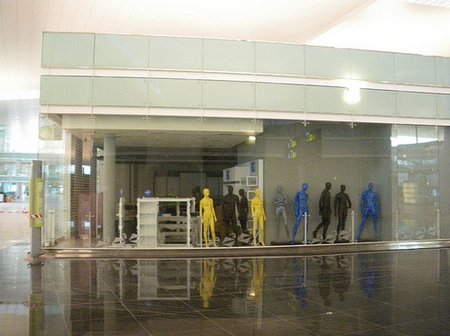People are eagerly awaiting the new Barcelona Airport T1 in another week or two and the retailers are busily getting ready.
The commercial space at T1 is 28,612m2 of which 9,812m2 is to be occupied by a Business centre, VIP lounges and other customer services. This leaves 18,796m2 in retail & F&B, with almost 2/3rds being F&B. In total there are 46 new retail stores & 47 F&B outlets, however apparently eventual plans are to extend the retail outlets to 73.
The Duty Free store will be Aldeasa, plus they are running 4 stand alone stores. Areas will be operating 22 of the 47 F&B outlets though SSP, Pansfood & Airfoods Resturacion also have a presence.
The remaining retail includes a mix of international & local luxury brands (Montblanc, Zara, Massimo Dutti etc), Lingerie, News & Gifts and the usual airport fare.
With opening less than 2 weeks away, one wonders about the state of retailer fitouts. Photos taken from the site 2 weeks ago did not show much progress in some outlets.


In fairness though, its not unusual for airport retail to lag a little bit after the official opening of the airport.



One photo from the airport retail area which does cause a tiny bit of concern as a traveller is the highly reflective flooring – wonderful for looking up women’s dresses I would assume by this photo.

Images : Flicker/bitxofo



